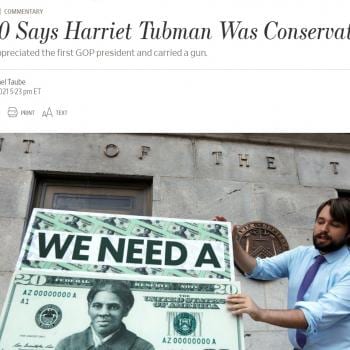The Supreme Court refused Monday to consider efforts by Republican-led states to defund Planned Parenthood.
Despite its new, more conservative tilt, the court let stand federal appeals court rulings that allowed the reproductive health organization’s patients to contest laws in Louisiana and Kansas that stripped its Medicaid funds.
The court’s refusal to hear the case represents a setback for conservative interest groups in many states that have sought aggressive action against Planned Parenthood and abortion providers in general.
It may seem odd, but in the U.S. the Supreme Court can make a statement simply by refusing to hear a case. This is because if the Supreme Court refuses to hear a case, the decision of the lower court is affirmed—in this case, the federal appeals court, which found for Planned Parenthood and blocked Louisiana and Kansas’ attempts to defund Planned Parenthood by denying them Medicaid funds.
Today’s decision means that lawmakers in those states have no further recourse to plead their case, and that they therefore will not be able to strip Planned Parenthood of Medicaid funds.
As many of you will remember, efforts to strip Planned Parenthood of Medicaid funds go back to 2015, when controversial videos recorded by conservative activists claimed falsely to reveal that Planned Parenthood was selling fetal body parts for financial gain. Conservatives had a heyday with these deceptive videos, and lawmakers in Louisiana, Kansas, and a number of other states moved to “defund” Planned Parenthood.
Planned Parenthood receives Medicaid funds when it provides services to women who are on Medicaid, a form of government health insurance available only to low income individuals. Medicaid does not cover abortions, so efforts to strip Planned Parenthood of Medicaid funds affect only those Medicaid-insured women who visit Planned Parenthood for contraceptives, STD testing or treatment, or other services.
So, the Supreme Court declined to hear the case and in doing so reaffirmed the decisions of the lower courts against efforts to “defund” Planned Parenthood. Where did the various justices fall on this decision?
Three of the court’s conservatives – Associate Justices Clarence Thomas, Samuel Alito and Neil Gorsuch – dissented and said the court should have taken up the issue. Notably, Chief Justice John Roberts and new Associate Justice Brett Kavanaugh did not join the dissent.
This is perhaps made more fascinating by Thomas’ dissent:
“What explains the court’s refusal to do its job here?” Thomas wrote. “I suspect it has something to do with the fact that some respondents in these cases are named ‘Planned Parenthood.’ That makes the court’s decision particularly troubling, as the question presented has nothing to do with abortion.”
Thomas’ claim that the justices who voted against hearing the case did so because they did not want to take a case where “some respondents … are named ‘Planned Parenthood'” makes little sense when the conservatives on the Court were divided among themselves. Kavanaugh was put on the court in part because anti-abortion activists saw him as a guaranteed vote for their side, but he, too, voted against Thomas, Alito, and Gorsuch.
Mind you, I do not think this suddenly makes either Kavanaugh or Roberts, also generally considered part of the conservative faction on the Court, some sort of pro-abortion heavyweights. Far from it! It does suggest that there is at least some disagreement among the conservatives on the Court as to what is the best strategy to achieve what is likely still the same desired outcome. And that is interesting.
Lower courts have actually been divided on the issue of Medicaid funding. While most states’ efforts to deny Planned Parenthood this funding have been blocked, the 8th Circuit Court sided with the state of Arkansas in 2017, and the two Planned Parenthood clinics in that state are currently unable to receive Medicaid funding.
The court not taking this does not categorically mean that states cannot prohibit using Medicaid funds for Planned Parenthood. States in the 8th Circuit, for example, can still do that because there is a circuit split, and the 8th Circuit ruled that Medicaid recipients don’t have the right to challenge who the state decides are qualified Medicaid recipients. States in the Eighth Circuit include Arkansas, Iowa, Minnesota, Missouri, Nebraska, North Dakota and South Dakota.
The existence of a split circuit makes the Supreme Court’s decision not to take the cases in Louisiana and Kansas somewhat more confusing. According to Wikipedia: “Some scholars suggest that the Supreme Court is more likely to grant review of a case to resolve a circuit split than for any other reason.”
Generally speaking, the Supreme Court likes to resolve legal questions that have resulted in a split circuit—and indeed, Thomas, Alito, and Gorsuch reference this in their dissent when they write: “We are responsible for the confusion among the lower courts, and it is our job to fix it.”
The four liberal justices’ preference for maintaining the status quo, rather than an iffy Supreme Court ruling that might go against Planned Parenthood, is completely understandable—and seems to be what Thomas was referencing when he claimed that the reason the Court is not taking the case up is because it involves respondents “named ‘Planned Parenthood.'” But what about Roberts and Kavanaugh?
The votes of only four justices are necessary for a case to be accepted for review, so either Roberts or Kavanaugh could have had the case reviewed by flipping their vote, and only their vote. What game are Roberts and Kavanaugh playing, exactly? My curiosity is piqued.
The Supreme Court’s decision not to review these cases is not an overwhelming victory for reproductive rights activists—the best outcome would have been for the Court to hear the case and rule in favor of Planned Parenthood on the basis that states cannot arbitrarily decide which providers may serve Medicaid patients.
Still, at a time when the Court is fast moving to the Right, the Supreme Court’s refusal to review these cases still feels a bit like a victory—it means that in most of the U.S., Planned Parenthood can serve Medicaid patients without worrying whether they will be reimbursed for the services provided.
And that is at least better than some alternatives I can imagine .
I have a Patreon! Please support my writing!















